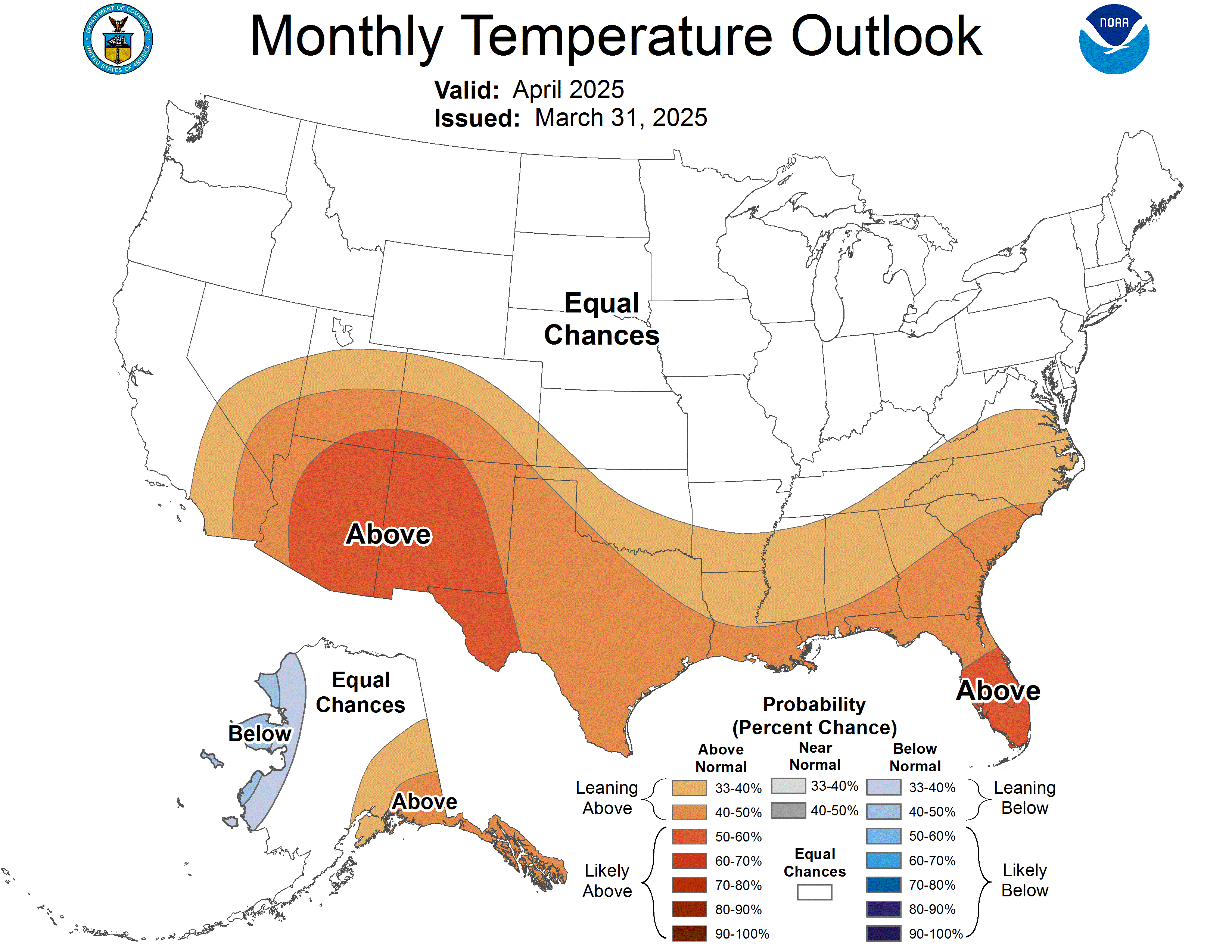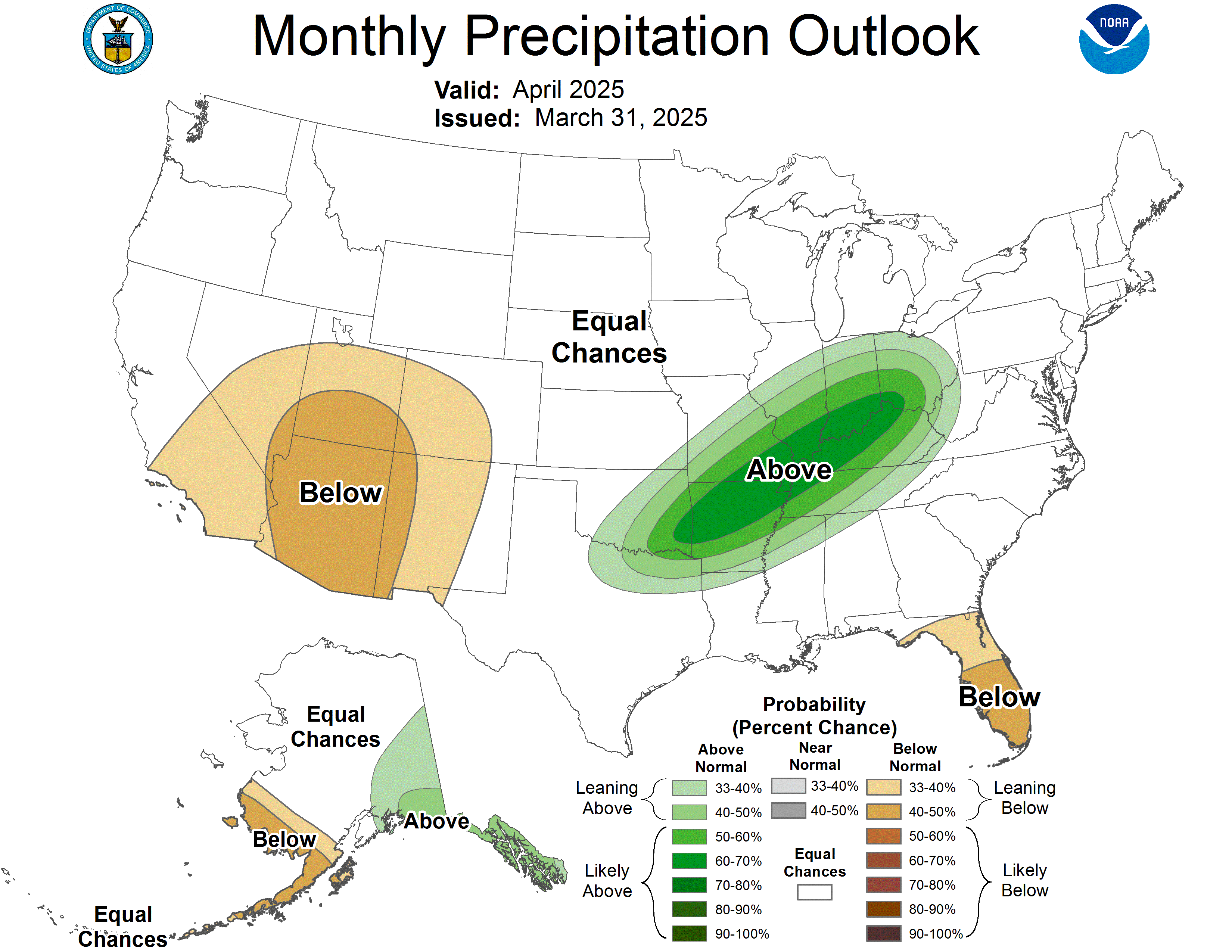
"In winter's cold and sparkling snow,
The garden in my mind does grow..."
— Cynthia Adams
Winter is Great for Pruning
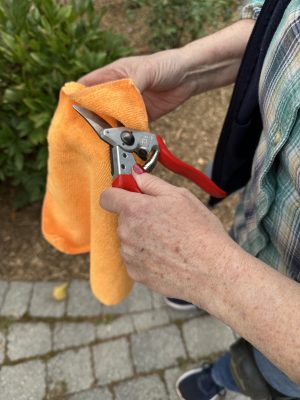
Late February and early March are an ideal time for pruning many of our favorite woody ornamentals. Gardeners and landscapers prune for many reasons including plant health, aesthetic appeal, better fruiting/flowering, safety and size management.
Cold weather can help to limit pathogens and pests entering woody stems through fresh cut wounds. In spite of this, it is still best practice to sterilize your pruners with a bleach or alcohol wipe before moving from one tree to the next.
Avoid cutting spring flowering ornamentals, however, as they may already have their buds set and ready to go. Always research the pruning techniques for the specific species you are working with to ensure best results.
Landscaping to Support Birds in Winter
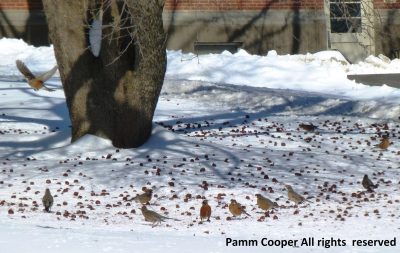
Birds can be attracted to properties during the winter if there are suitable food plants.
Some of the best for winter fruits are native winterberry and inkberry, native and non- native viburnums, native eastern red cedar and crabapples.
Perennials such as coneflowers, Rudbeckia, asters, grasses with seedheads and goldenrods that are left standing, so seeds are available, are also good for birds. Throughout the winter, as seeds are eaten, plants can be cut back if desired.
Caring for Birds in the Winter
Native Trees, Shrubs and Vines with Wildlife Value
Bird Flu Safety for Gardeners
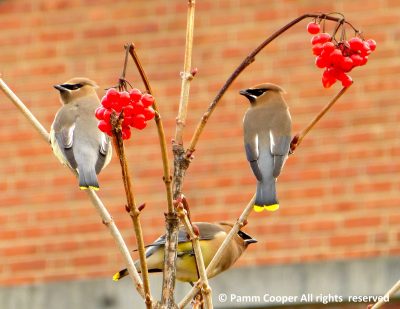
Seeing Avian Influenza (Bird Flu) in the news recently may raise questions about wild bird populations in our gardens. While we are not animal professionals, we have a few general tips and resources to share.
- Always avoid direct contact with sick or dead birds.
- Heed the recommendations of your state and local government agencies regarding keeping bird feeders out or taking them down.
- Report sightings of dead birds (especially in large groups) to CT DEEP
- If you have additional questions, CT DEEP Wildlife Division, the State Veterinarian, or the Connecticut Veterinary Medical Diagnostic Laboratory are all great resources that can assist!
There are three agencies in the state of CT are keeping an eye on developments.
- Questions regarding wildlife should go to CT Dept of Energy & Environmental Protection Wildlife Division
- Questions regarding backyard poultry should go to CT Dept of Agriculture or the State Veterinarian
- Questions regarding human health concerns can be directed to CT Dept of Health
Word from the WiSE
This month, the UConn Women in Soil Ecology club brings you a word about conditions needed for starting seedlings: Avoiding the dangers of the fuzzy white fungus.
Have you ever experienced a fuzzy white fungus growing in your seedling tray? If so, your seedlings may have been at risk of damping off. Damping off is a soilborne fungal disease that can cause your seedlings to rot. The typical culprits in your seedling trays are the fungi Rhizoctonia spp., Fusarium spp., and Pythium spp. These fungi love cool and wet conditions. If your seedlings have fallen over or collapsed, it may be a sign of these pathogens.
Overwatering your seedlings can put them at an increased risk, so it is best to adjust your watering regime and increase air flow. To prevent damping off, be sure to use fresh potting media and sterilize your pots, trays, and tools if they are being reused from previous growing seasons or made contact with garden soil. Provide your seedlings with warmth and bright light for seedling success!
By Nora Doonan – Soil Science PhD Student, UConn PSLA
Knowledge to Grow On
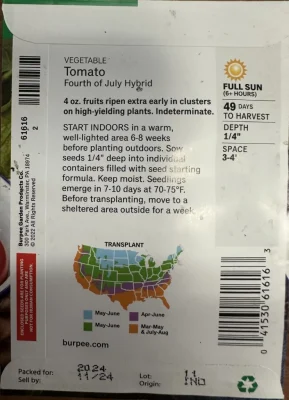
Read our Ladybug blogs written weekly:
Common Slime Molds of Connecticut Woodlands
SEED PACKETS 101: A Beginner’s Guide to Reading a Seed Packet
Upcoming Events and Things to Do
- Get your seeds and seed starting supplies, locally! While many big box stores can be a great resource for affordable seed and seed starting products, local garden centers throughout the state are starting to provide these products and their expertise as well!
- Find something to please everyone in the family with 37 Things to Do in CT this February!
Educational Opportunities & Workshops
- Attend A Local Garden Club meeting, talk, or workshop
- Northeast Extension Fruit Consortium - Various dates through February & March, Via Zoom
- Gardening for the Frogs - Feb. 20, 2025, via Zoom
- UConn's Master Gardener Program runs a Seed Distribution program in the winter in partnership with Ocean State Job Lot. This program helps donate seed to schools, community organizations, and non-profits across the state.
CT Flower & Garden Show 2025
The UConn Home & Garden Education Center will have our booth at the CT Flower Show this year! Come and say hello to our Plant & Soil Health Staff and Master Gardener Volunteers!

- Thursday 2/20 - 11:00 AM
- Al's Top Secret Compost Recipe
- Alastair Ong, Esq., UConn Master Composter
- Al's Top Secret Compost Recipe
- Friday 2/21 - 12:30 PM
- Look at Interesting Connecticut Lichens and Slime Molds
- Pamm Cooper, UConn Home & Garden Education Center
- Look at Interesting Connecticut Lichens and Slime Molds
- Saturday 2/22 - 12:30 PM
- Learning to Speak Horticulture
- Heather Zidack, UConn Home & Garden Education Center
- Learning to Speak Horticulture
- Sunday 2/23 - 11:00 AM
- Be a Plant P.I. Learn to Detect, Identify and Prevent Plant Diseases
- Dr. Nick Goltz, UConn Plant Diagnostic Lab
- Be a Plant P.I. Learn to Detect, Identify and Prevent Plant Diseases
February Gardening Tips
- Recent temperature swings may cause perennials to heave out of the ground. Gently push them back into the soil or cover with mulch.
- When buying houseplants in winter, be sure to wrap them well for the trip home and, if possible warm up the car. This prevents the foliage from freezing and protects tropicals from drafts.
- When using salt to melt ice on walks and driveways, spread it carefully to avoid damage to nearby shrubs. Consider using sand or sawdust instead. After the snow melts, flush the area around the roots exposed to salt with fresh water.
- Bring pruning tools inside and clean them for the upcoming season. Disassemble hand pruners, and loppers. Sharpen the blades, oil the levers, and remove any rust.
- If you’re starting seeds under fluorescent lights, check the light tubes for signs of age. Dark rings on the ends of tubes means they should be replaced. Dispose of properly.
- If you potted bulbs for forcing last fall, check their progress. Soil should be barely moist. If tips have sprouted and have a few inches of growth, bring the pot into a cool, bright room (50 to 60 degrees F). Gradually expose the plant to increasing warmth, indirect sunlight, and increased watering. Feed once a week with half-strength houseplant fertilizer. To help the stems grow straight, turn the pot every day. When buds and foliage are fully developed, bring into full sunlight, and enjoy!
- Brush snow from evergreens as soon as possible after a storm. Use a broom in an upward, sweeping motion. Serious damage may be caused by heavy snow or ice accumulating on the branches.
- Turn the compost pile during any stretches of mild weather.
- Clean leaves of large and smooth leaved houseplants like dracaena, philodendron, ficus, etc.
- Scout for invasive vines like bittersweet. Cut them off of tree trunks to help discourage girdling.
- This is the time to start small-seeded flowers such as begonias and petunias. Leek and onion seeds should also be started as soon as possible.
This Month’s Newsletter Contributors:
Heather Zidack, Pamm Cooper, Marie Woodward, Nora Doonan
